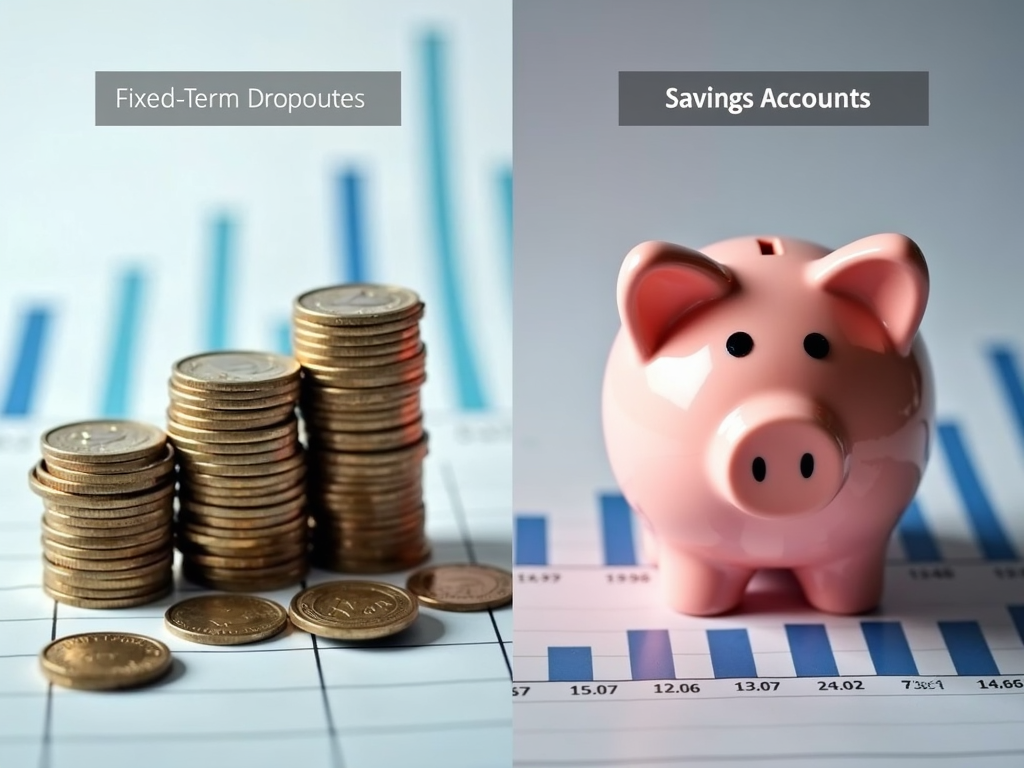In a world where low interest rates are the norm, wise investors seek secure anchors for their savings. Term deposits and savings accounts offer stable alternatives that ensure both safety and flexibility. While term deposits attract with higher interest rates, savings accounts provide the freedom of access. This article highlights the differences between these two forms of investment and equips you with the tools to make the best decision. Discover how current offers and interest rates can influence your financial strategy.
Term Deposit vs. Savings Account: Finding the Right Balance Between Safety and Flexibility

The Subtle Differences Between Term Deposits and Savings Accounts are more than just a matter of names. They can make a decisive difference when it comes to managing savings effectively in times of low interest rates. Both forms of investment are safe alternatives, but they cater to different types of investors and offer various advantages that can be crucial depending on personal risk appetite and financial needs.
The Term Deposit, often referred to as a safe haven for long-term planning, promises fixed interest rates for the chosen duration, which can range from one month to a decade. The advantage lies in the predictability of returns – ideal for those seeking financial stability and consistent capital growth. This makes the term deposit an attractive option for those who wish to be rewarded with higher interest rates and have excess funds that do not require immediate access. However, this stability has a fundamental limitation: the lack of flexibility. During the investment period, access to funds is limited, and premature withdrawal incurs penalties, known as early termination fees.
On the other hand, there is the Savings Account, which stands out for its flexibility. It allows access to the invested capital at any time and is particularly suitable for those who value liquidity or need a buffer for unforeseen expenses. This investment option is perfect for emergency reserves or temporary financial solutions. However, the variable interest rate may be subject to fluctuations, influenced by changes in the broader interest rate environment. This could present both risk and opportunity: a high adaptability in times of rising interest rates or lower yields when rates are declining.
To find an optimal path, it is worthwhile to follow a Diversification Strategy. This involves considering a mix of term deposits for long-term guarantees and savings accounts for short-term needs. This allows one to leverage the benefits of both worlds without feeling completely tied to a single form of investment. Regular review and adjustment of the strategy to current rate developments, along with a constant check on deposit guarantees, strengthen confidence and protect savings.
Ultimately, the decision between term deposit and savings account depends on individual preferences, from the need for security to the willingness to speculate on potentially higher returns. By wisely combining both options, investors not only secure a financial buffer in times of low interest rates but also create a stable foundation for their future financial goals.
Current Offers of Term Deposits and Savings Accounts as a Strategy for Capital Preservation

In the current low interest rate phase, many investors are wondering how they can invest their savings safely and profitably despite unfavorable conditions. Two popular options in this regard are Term Deposits and Savings Accounts, both of which offer specific advantages and ensure high security.
The Term Deposit has the advantage of providing a stable and predictable return due to fixed rates. As of March 2025, rates for one-year term deposits reach up to 3%, while those for three- and five-year deposits reach up to 2.8%. These forms of secure investment are particularly attractive for conservative investors looking to reliably plan with a fixed return. Well-known banks like Deutsche Bank and Postbank attract clients with offers such as 2.25% interest for new customers on a one-year investment with a minimum amount of €2,500. Another advantage of the term deposit is the coverage provided by the EU’s legal deposit guarantee scheme, which protects investments up to €100,000.
In contrast, the Savings Account offers greater flexibility as it allows investors to access their funds at any time. This investment strategy is ideal for a freely available financial cushion or for temporary investments of excess liquidity. As of March 2025, some banks offer attractive rates on savings accounts of up to 3.5%, often attracting new customers with rate guarantees. Examples of good conditions include Trade Republic with 2.75% and Bank Norwegian with 2.70% interest. This flexibility is complemented by the security of the deposit guarantee, while the variable rate entails both opportunities and risks.
In a period where rates are generally low, a combination of term deposits and savings accounts might be the right strategy to safeguard savings and allow for slow growth. Investors could allocate the long-term part of their savings into term deposits to benefit from secure rates while the savings account serves as an immediately available financial reserve when needed. This strategy takes into account both the desire for safety and the need for flexibility.